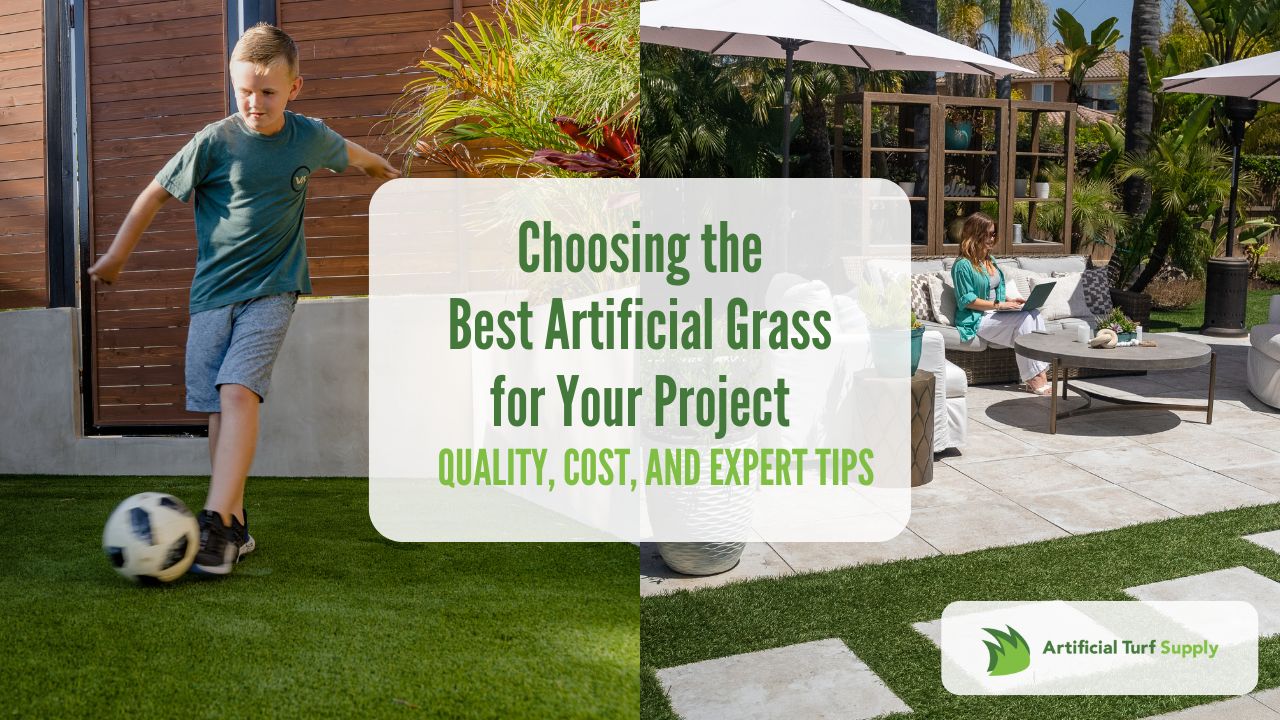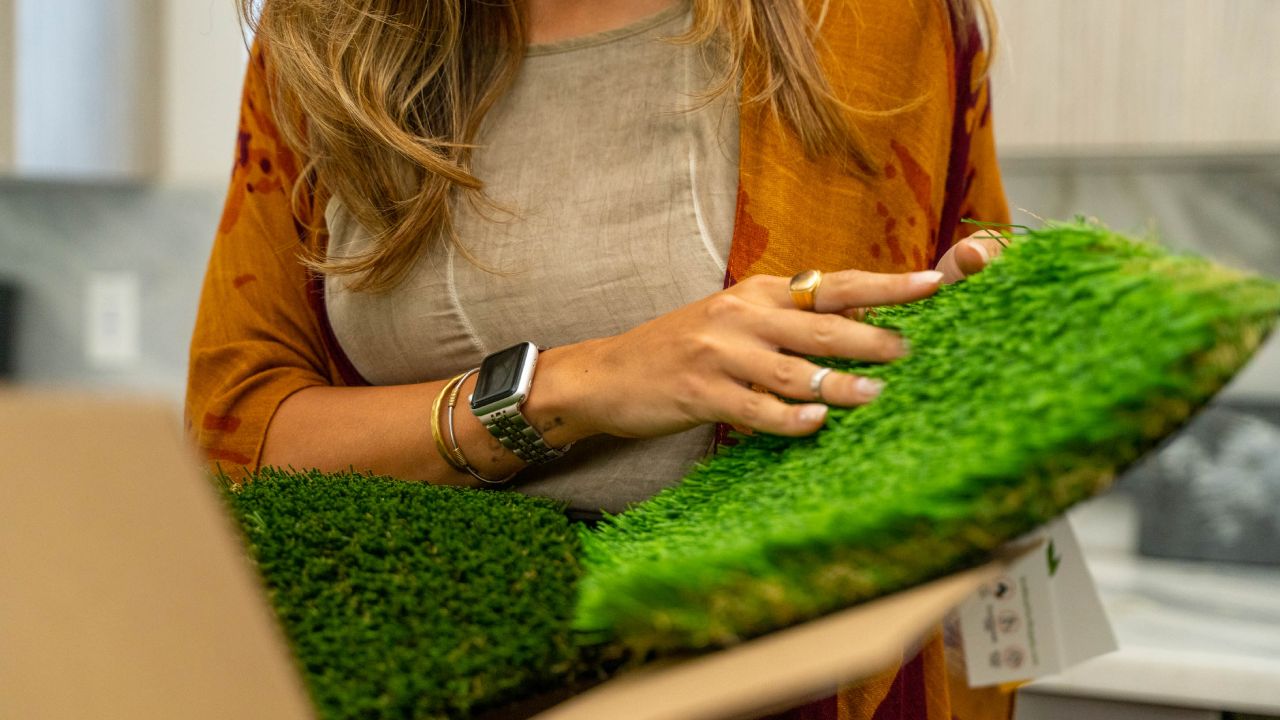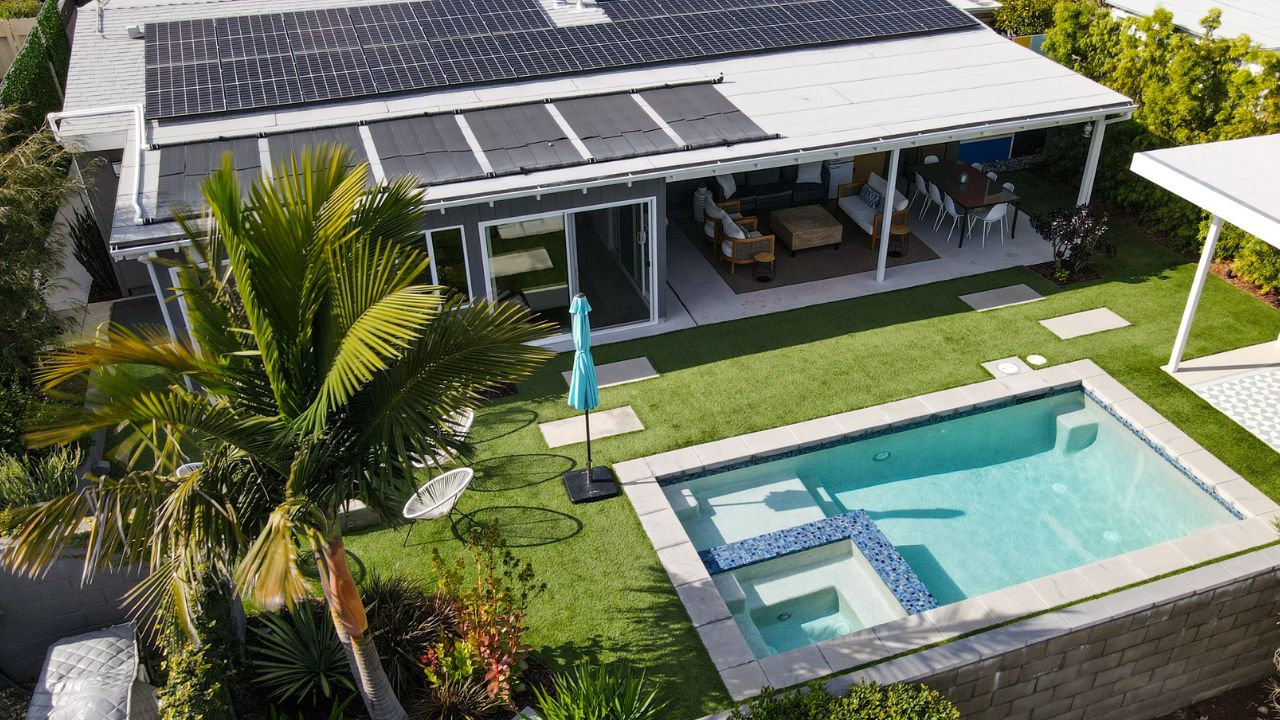
“I just wish I knew that earlier.” The man’s frustration still rings in my ears today. I was new to the artificial grass industry. And he was NOT happy. At that moment, he had to hire a professional crew to redo his installation with a different type of grass. No one should have to deal with that level of frustration. That’s why we’re discussing everything you need to know to choose the best artificial grass for your project.
Choosing the best artificial grass for your project is crucial because it’s an investment of time, money, and effort. And those three things are usually in short supply. These days, the right synthetic turf is a wonderful investment. And when installed well, your artificial grass looks realistically lush and green year-round. No watering. No mowing. No weeding or chemical treatments are necessary.
What to Know When Shopping for the Best Artificial Grass
- Common uses for artificial grass and the needs of each
- Consider your specific needs: foot traffic, pets, and climate
- Tips for building your budget
- Understand key terminology: face weight, pile height, and backing
- Installation: process and suggestions
- Other helpful tips & insight
Budgeting for Your Artificial Grass Project
When planning an artificial grass project, it’s essential to understand the various components that impact the overall cost. By familiarizing yourself with these factors and creating a comprehensive budget, you can ensure a successful installation without any financial surprises.
Artificial Grass Cost Considerations
-
- Turf quality: Higher-quality artificial grass, with features like enhanced durability, realistic texture, and advanced drainage, typically comes at a higher price point.
- Project size: The larger the area you want to cover with artificial grass, the more materials and labor you’ll need, increasing the overall cost.
- Site preparation: The lawn condition and the work required to prepare the base for installation can significantly impact the total cost.
- Installation complexity: If your project involves intricate shapes, curves, or obstacles, it may require more time and labor, leading to higher installation costs.
- Infill material: The type and amount of infill material you choose, such as silica sand, crumb rubber, or organic options, will affect the overall cost of your project.
- Accessories: Additional features like edging, seam tape, and weed barriers can add to the total cost of your artificial grass installation.
The cost of artificial grass varies depending on the quality of the product, the size of your project, and the complexity of the installation. On average, you can expect to pay between $5 and $20 per square foot for artificial grass, including installation.
-
- Low-end artificial grass: $5 to $10 per square foot
- Mid-range artificial grass: $10 to $15 per square foot
- High-end artificial grass: $15 to $20 per square foot
Keep in mind that these prices are just estimates. Your actual costs may vary based on your specific project and location.
I know juggling all these cost details can be tricky. But I also know how important getting an accurate budget is. One easy first step is to get a quote from our team. With some critical up-front pieces of information, we can help you get all the correct information to establish a realistic budget for your project.
Planning Your Artificial Grass Budget
Here’s how I recommend creating an adequate budget for your artificial grass project:
- Measure your space: Accurately measure the area where you plan to install artificial grass to determine the total square footage of your project.
- Obtain quotes: Reach out to multiple artificial grass suppliers and installation professionals to request quotes for your project. Ensure them with your square footage and any specific requirements or preferences.
- Factor in site preparation: Consider the current condition of your lawn and any necessary site preparation work, such as removing existing grass, leveling the ground, or installing a weed barrier. These tasks can add to the overall cost of your project.
- Compare options: Review the quotes you receive and compare the products, services, and prices each supplier or installer offers. Online shopping is an excellent tool for this step. Don’t automatically choose the cheapest option; consider factors like quality, durability, and customer reviews.
- Set aside a contingency fund: It’s wise to allocate 10% to 15% of your total budget for unexpected expenses or changes that may arise during installation.
Carefully plan your budget. Consider all the factors that impact the cost of artificial grass. Then, you can make informed decisions to ensure a successful, cost-effective installation. Remember, investing in a high-quality product and professional installation may cost more upfront but can save you money in the long run through reduced maintenance and longer lifespan.
Choosing the Best Artificial Grass Options
So, you’ve learned how to budget effectively for your turf project. And you’ve learned what to consider for different types of artificial grass installations. What’s left?
Now, you need to understand the synthetic turf terms and options available.
Choosing the Right Material and Quality
You’ve got a few artificial grass options: polyethylene, polypropylene, and nylon. Polyethylene is the most popular choice for its balance of durability, softness, and realistic appearance. Nylon is the toughest of the bunch, but it can feel a bit stiff underfoot. And polypropylene? It’s best suited for putting greens or decorative purposes.
Selecting the Appropriate Pile Height
Pile height is another crucial factor to consider. This refers to the length of the grass blades, ranging from a short 0.5 inches to a luxurious 2.5 inches or more. Opt for a shorter pile height (around 1-1.5 inches) for high-traffic areas to prevent matting and maintain a neat appearance. For a more lush, natural look, go with a more extended pile height – just be prepared to fluff it up regularly with a turf rake.
Assessing the Density and Weight
Density and weight are two more critical factors to keep in mind. Face weight refers to the amount of fibers per square yard, while density is the number of stitches per square inch. The higher these numbers, the better the quality and durability of the turf. Aim for a face weight of at least 50 ounces and a density of 15,000 stitches or more for optimal performance.
Evaluating the Backing System
Pay attention to the backing system! This is the foundation of your artificial grass and plays a crucial role in drainage, stability, and overall longevity. Look for backing with multiple layers of reinforcement and drainage holes to prevent water from pooling on the surface. Some high-end products even feature antimicrobial treatments to combat odors and bacteria growth.
Exploring Different Colors and Textures
One of the best things about artificial grass is the variety of colors and textures. From deep emerald green to a more muted olive hue, a shade suits every taste and landscape style. With advanced manufacturing techniques, today’s artificial grass looks more realistic than ever – complete with varied blade shapes, thatch layers, and even brown “dead” fibers for an authentic touch.
Comparing Maintenance Requirements
I’ve said this many times before. Artificial grass is low-maintenance, not no-maintenance. Artificial grass needs a good rinse now and then to remove dirt and debris. You’ll also want to brush it regularly to keep the fibers upright and fluffy. Some products may require more effort, so ask about maintenance requirements before selecting.
Artificial Grass Installation
Okay, high-quality artificial lawns can last 15-20 years or more. But that’s only the case if it’s installed and maintained well. If you’re the DIY type looking to install your artificial grass, here’s an overview of the installation process.
- Prepare the sub-base: Remove existing grass, weeds, and debris. Level the ground and compact the soil to create a stable foundation.
- Install a weed barrier: Lay down a weed barrier or landscape fabric to prevent future weed growth and improve drainage.
- Add a base layer: Spread and compact a layer of crushed rock to create a stable base for your artificial grass. Common materials include decomposed granite or limestone.
- Place the turf: Unroll and position the artificial grass on the prepared base, ensuring a tight fit against all edges and seams.
- Trim the excess: Use a sharp utility knife to trim any excess turf around the edges, leaving a slight overlap for a clean, finished look.
- Secure the turf: Use landscape stakes or turf nails to secure the artificial grass, preventing shifting or wrinkling.
- Add infill: Spread a layer of infill material over the turf’s surface. Infill is usually made up of silica sand or recycled rubber. Then, a power broom is used to work the infill into the grass fibers. This provides stability and a more natural appearance.
- Brush and enjoy: Give the artificial grass a final brush to fluff the fibers and create a lush, natural look. Your new lawn is now ready to enjoy!
There is a lot of detail and complexity to many of these steps. And there are a lot of little mistakes or oversights that can negatively impact your turf’s long-term health in significant ways. That’s why I can’t stress this enough:
Hiring professional installers is worth the investment.
You want a flawless finished product because that’s the best return on your investment, right? And that means doing all of these installation steps correctly the first time and avoiding costly mistakes.
If you’re still on the fence about hiring professionals, at least talk to some. The Artificial Turf Supply is among the best in the business. They’ve been around for decades and install artificial grass all across the U.S. Give them a call at (866) 677-9405. They’re always happy to answer questions and give you the benefit of their experience.
Other Helpful Insights and Tips for Choosing Artificial Grass
There are still pages that could be said about choosing the best artificial grass for your project. I’ll hit on some of the most essential tips everyone should know before diving in too deep.
- Request samples: Always request samples of the artificial grass products you’re considering. This allows you to see and feel the turf’s texture, color, and quality firsthand, making it easier to compare options and make an informed decision.
- Consider your climate: Different artificial grass products are designed to withstand various climatic conditions. If you live in an area with extreme temperatures, opt for a turf with built-in UV protection and heat-resistant fibers to prevent fading and damage.
- Think about maintenance: Artificial grass requires significantly less maintenance than natural grass, but it’s not entirely maintenance-free. Consider the level of upkeep you’re willing to commit to, and choose a product that aligns with your expectations.
- Don’t forget about infill: Infill plays a crucial role in the performance and longevity of your artificial grass. Research the various infill options available, such as silica sand, crumb rubber, and organic materials like coconut fibers or cork, to determine which best suits your needs.
- Invest in quality: While opting for the cheapest artificial grass option may be tempting, remember that quality supplies and products matter. Investing in a high-quality, durable product will save you money in the long run by reducing the need for repairs and replacements.
- Hire a professional: Although DIY artificial grass installation is possible, hiring a professional team with experience in synthetic turf is often best. They’ll ensure a flawless installation and can offer valuable guidance throughout the process.
Common Uses for Artificial Grass
One of the best things I’ve found about artificial grass is its incredible versatility. By that, you have so much control over how it looks, feels, and performs. So you can use it for so many different locations and functions. Lush, realistic turf is fantastic for residential lawns. Durable, low-maintenance options function perfectly in commercial spaces. Public parks, athletic surfaces, pet spaces … the list continues. And for each space, there’s an ideal turf type.
1. Playgrounds
Artificial grass is an excellent choice for playgrounds. It provides a safe and comfortable surface for children to play on. These surfaces need a soft, cushioned backing to help avoid injuries. A shorter pile height ensures a stable footing for little feet.
2. Lawns and Landscaping
Lawns and backyards are among the most popular uses of artificial grass. Homeowners love the always-green, pristine appearance of artificial turf. And who would complain about no mowing, watering, or fertilizing? The suitable turf depends on several things. Climate, shading, and foot traffic impact a synthetic turf’s longevity.
3. Indoor and Outdoor Sports
Artificial grass is a common choice for indoor and outdoor sports facilities. You’ll often see it on football fields, soccer pitches, tennis courts, and more. You can look for a turf specifically designed for sports applications. These turf types have enhanced durability, optimal ball roll, and better shock absorption.
4. Gym Flooring
Many gyms and fitness centers are embracing artificial grass for specific athletic spaces. Synthetic turf absorbs shock, feels better on feet, and resists slips. It also adds a touch of natural aesthetics to the space. The best turf for a gym should include antimicrobial properties to prevent the growth of bacteria and odors.
5. Around Pool Decks
Many pool owners use artificial grass around their pool decks. It’s a beautiful, slip-resistant surface that stays cool underfoot even on hot summer days. Choose a turf with excellent drainage capabilities to prevent water pooling on the surface. Choose a product with UV resistance to avoid fading and deterioration.
6. For Dogs and Other Pets
Synthetic turf is a low-maintenance, hygienic solution for pet play areas. Products with built-in drainage systems allow for quick and easy waste removal. Antimicrobial properties combat odors and keep the surface clean and sanitary.
7. Putting Greens
Golf enthusiasts often love creating personal greens at home. Synthetic putting greens should have a short pile height (around 0.5 inches). This ensures a smooth, consistent roll. You’ll also want a dense, tightly stitched surface to maintain optimal ball speed and trajectory.
Artificial Turf Supply has the best synthetic grass options for each type of space. We’re ready to help you choose the best for your space.
How Will Your Artificial Grass Be Used?
Before you start shopping for your dream turf, take a second to consider your specific needs. Will your lawn see heavy foot traffic from kids and pets? Does it need to provide stability for athletes using it? Is it in direct sunlight or mostly shade? Do you live in a rainy climate or a dry one? Your answers will narrow down your options. Then, you choose the right product to handle whatever life throws.
Your artificial grass’s usage and traffic levels should help you make a few tough turf decisions. If your space will see lots of activity, you’ll want to choose a turf with a higher face weight and density. This means more fibers per square inch, which translates to better durability and resilience. Trust me, you want to avoid ending up with a flattened, worn-out lawn after just one season of backyard barbecues and football games.





